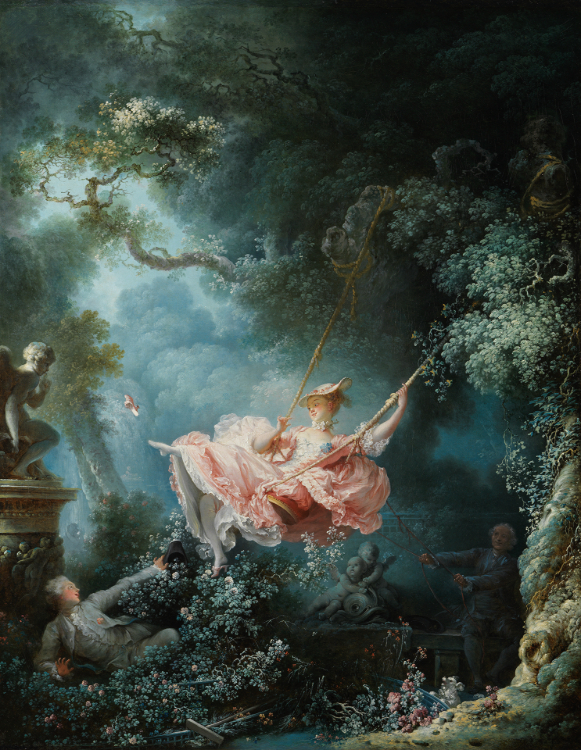The Swing by Jean-Honoré Fragonard

The Swing
Rococo-style painting was the Showtime After Hours of the mid-18th century, and The Swing is a quintessential representation of the style.
Rococo themes veered away from the classical and religious themes of previous periods to focus on everyday life. Well, everyday life of the French artistocracy. Rococo paintings were characterized by rich people disporting themselves, often with strong sexual subtext, in lush environments. See if you can spot the subtext in The Swing.
Rococo paintings were criticized later for being out of touch with the populace, and the disconnect they created with their dreamy, frolicking settings paved the way for the French Revolution a few decades later.
A Balancing Act
Rococo painting often employs the use of Asymmetrical Balance, which, at first thought, appears to be an oxymoron.
In this painting, the viewer's eye is primarily drawn to the lower half of the canvas, where the lovers reside in their debauchery. In order to balance the composition, the greenery of the garden fills the upper half of the painting to provide a sense of symmetery.
In symmetrical compositions, the primary subject's span across the canvas is more obvious (think of the two faces/two vases optical illusion). In asymmetrical compositions, other components of the painting counteract the primary subject to provide a sense of balance, hence the name.
Modern Miami or Enlightment-era France?
Rococo paintings heavily employ the use of pastel colors to lighten the thematic mood and draw the viewer's eye to the key subject matter. The use of pink specifically here may also help add another thick layer of the painting's obvious erotic themes.
In addition, the brushwork is less deliberate than in previous periods further enhancing the sense of playfulness.
Putti in my hands
Putti or childlike angels with diminuitive wings, are commonly used in painting to demonstrate a playful tone.
Given Rococo's divergence from serious themes in favor of frivolity, they're a common a fixture of the style.
A statue of Cupid on the left side of the painting is warning the viewer away from snitching about the ensuing hanky panky.
